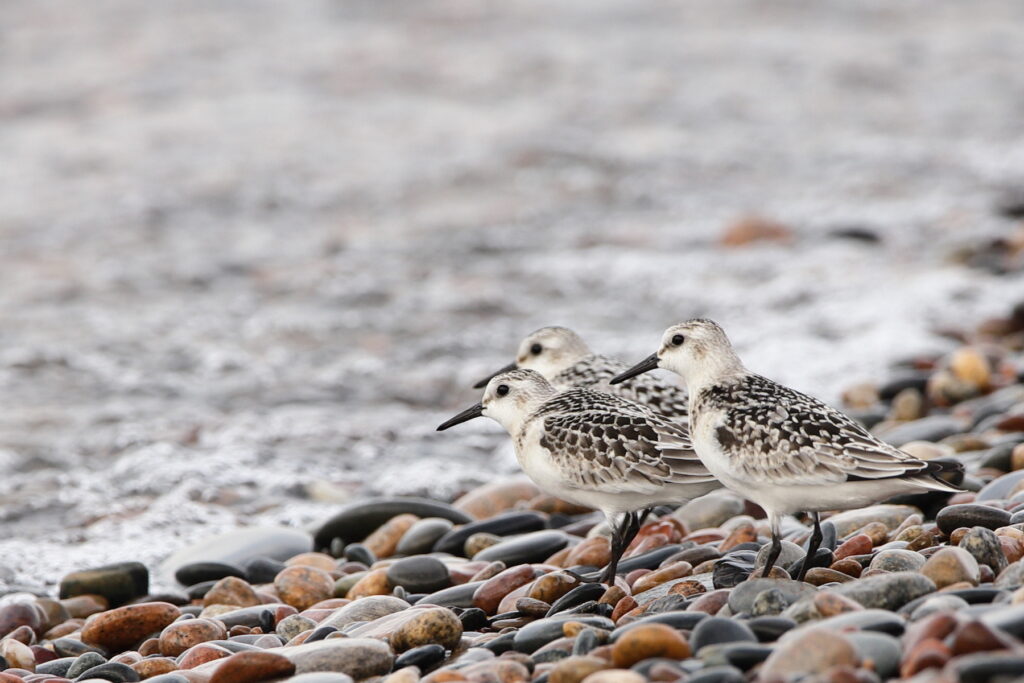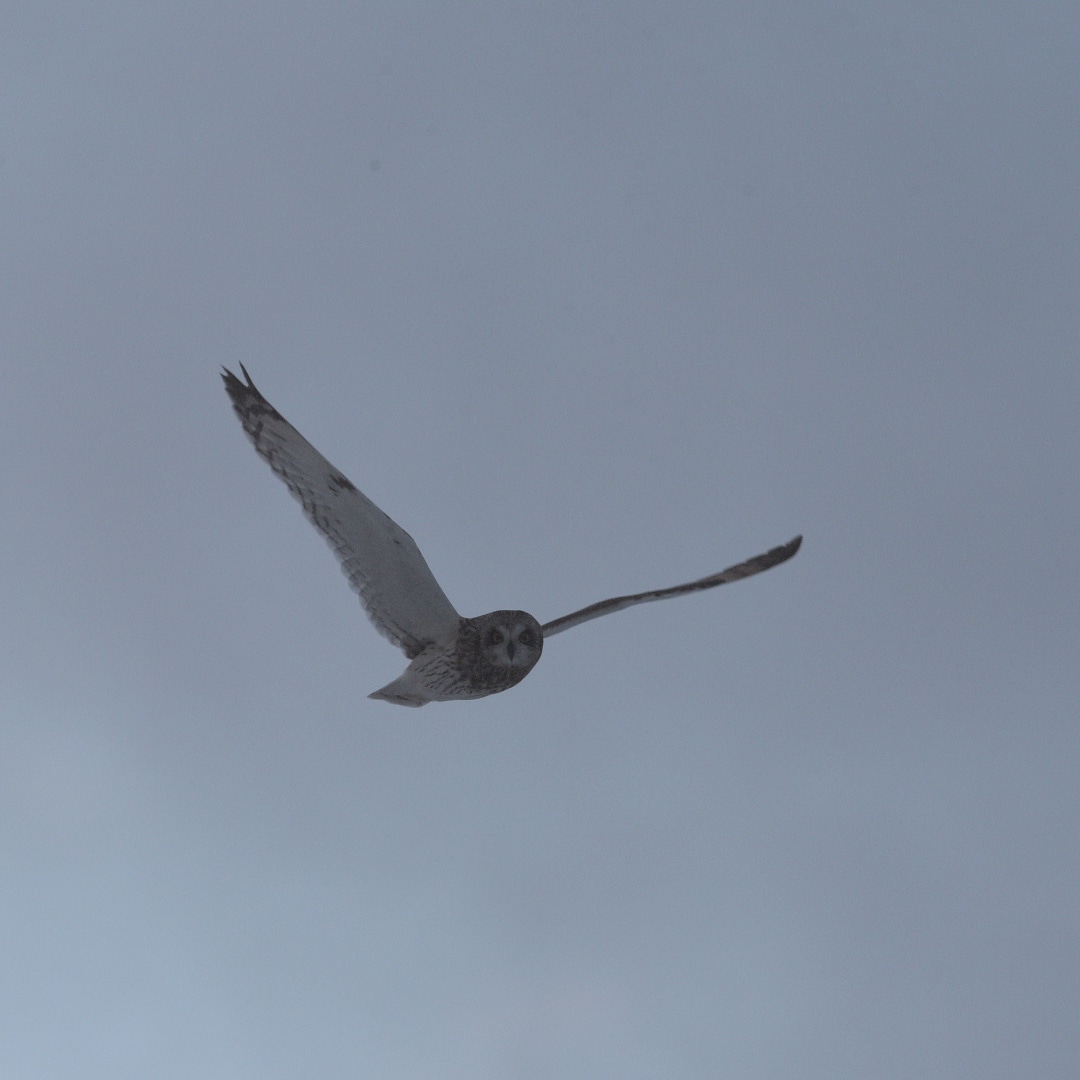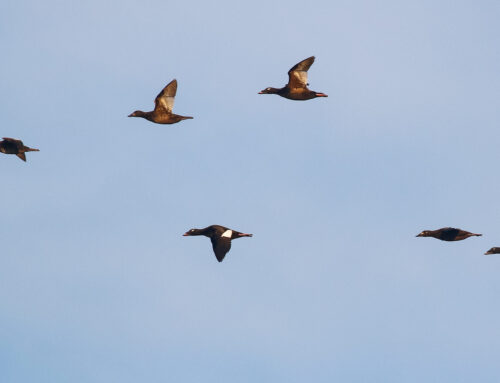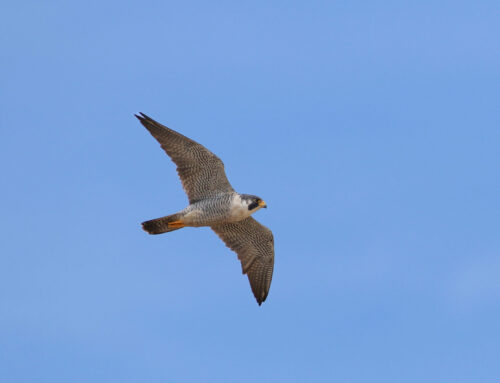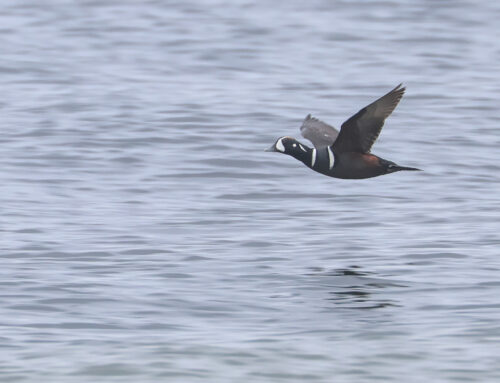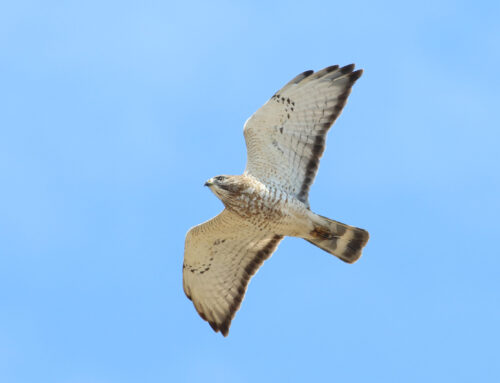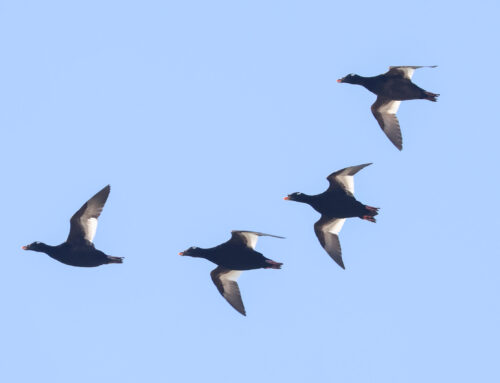This is my third spring conducting WPBO’s spring waterbird count. I am delighted to be back, for I love Whitefish Point, and in particular, I love observing spring migration here. The season is short, the flights intense, the hours of migration run around the clock. With the whole season ahead of me, there is much to look forward to: the peak Common and Red-throated Loon flights (typically during the first week of May); the night (mid-May) when tight packs of Bonaparte’s Gulls twist north into the gloaming; the afternoon when (I hope) it will be warm enough to count barefoot. But that’s the future. Let me tell you about the now — more specifically, the ways I’ve experienced Whitefish Point welcoming me back.
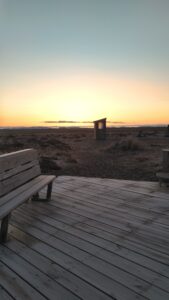
The Waterbird Shack on a crisp spring morning. Photo by Alison Vilag
I: Acorns. I arrived at the staff house to find acorns left on my bed — probably by the red squirrel that runs laps above where I’m trying to sleep. I tell Red to cease these acts of war and remind Red that I hang out with dangerous people like owl banders. What Red says in return seems rather crude for polite company, but the essence, I believe, is that Red doesn’t care.
II: Weather. As I imagine most of you are following the hawk count (Rich) and owl banding (Chris & Nova) blogs, I will try not to repeat the laments — which, of course, are true. As evidence, here is a photo of all the clothing I’ve worn (yes, worn all at the same time) to the count this week.

Standard office apparel for the first week of waterbird count.
To commit to a WPBO field season is to subject yourself to Lake Superior’s terms and conditions. And it’s rare the conditions are fair. Hawk counters and owl banders can take weather days when the weather is awful, but I am a waterbird counter. My subjects aren’t particularly fazed by foul weather. In fact, some of the most miserable conditions have brought some of my most interesting flights. Yes, I chose this suffering. And yes, enduring that suffering deepens my appreciation for these birds traveling towards a season that barely seems to exist right now.
I’ve had days where I’ve counted 800+ Sandhill Cranes (April 15 and 20). I associate this species with wetlands, and our wetlands still resemble a scene from a holiday greeting card. Watching Northern Harriers course through snow squalls is a classic spring scene that I’ve enjoyed dozens of times this week. A few days ago, I watched a Snowy Owl nonchalantly riding an ice floe that was moving slowly up Superior. It was the coolest thing ever. The bird was one of the most relaxed snowies I’ve ever seen: it preened, it yawned, it sat undulations from little waves with enviable form. I watched this for at least an hour; we’re only a week into the count, but certainly, this will remain a seasonal highlight.
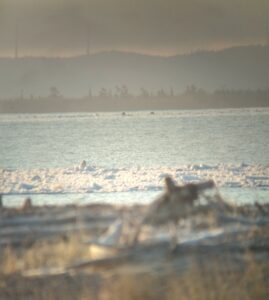
Snowy Owl riding an ice floe up the lake. Photo by Alison Vilag
III: Short-eared Owls! My interest in birds started at age six, the first owl I ever saw was a short-eared, and that first short-eared set me down the path that currently has me out at the tip of Whitefish Point for the season. For this, they are a bird especially meaningful to me. On the second day of the waterbird count, April 16, I watched two Short-eared Owls come off Superior. The first flew within a few yards of the waterbird shack: I could feel its flight, its gaze. The second, three hours later, barely beat a snow squall to shore, then tucked into the dunes, where it rested for the next five hours. Though the owl was concealed, it didn’t matter that I couldn’t see it: it felt good to share the beach with — and be welcomed by — a species I’ve got history with. I’m grateful the Short-eared Owl was able to rest undisturbed for as long as it did.
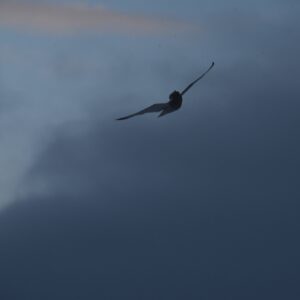
Short-eared Owl buzzing the waterbird shack. See its short ears?! Photo by Alison Vilag
Other notes from this week (April 15–21) at the waterbird count: dabblers — in particular Mallard (164) — are the dominant duck group passing the point right now. Some first-of-springs: Lapland Longspur was April 18; Yellow-rumped Warbler (Myrtle) was April 19; Greater Yellowlegs and Red-throated Loon both arrived April 21. I had an Iceland Gull (appropriately, hanging out on an ice floe) on April 16. Everything is exciting this time of year, with each day bringing new arrivals or at least the hope that there will be some. Thank you for reading, and I look forward to sharing this season with you!
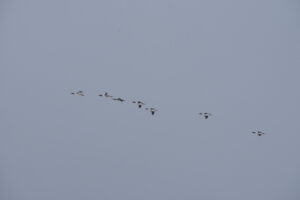
Common Mergansers flying past the waterbird count. Photo by Alison Vilag
~ Alison Világ
2022 Spring Waterbird Counter
Featured photo: Short-eared Owl. Photo by Alison Világ
Support WPBO’s Research During Birdathon on May 28
Our skilled team of bird counters and volunteers at Whitefish Point Bird Observatory will set out on a mission to count as many bird species as possible in one day on May 28, 2022, as part of an annual fundraising event supporting the amazing work happening at WPBO! In 2021, a whopping 152 species were counted and the event brought in $6,826.65! Let’s hope this year is just as successful.
This is where you come in! Because our work is 100% donor-funded, Birdathon provides all of our supporters with an opportunity to make a significant impact on our work by making a pledge or direct donation to Birdathon (even after the event). Any amount is helpful, but have some fun with it and consider letting your donation or pledge be inspired by a per-species amount.
Learn more about Birdathon and find links to donate at wpbo.org/birdathon.
Thank you so much to everyone who supports the work being done at WPBO!
